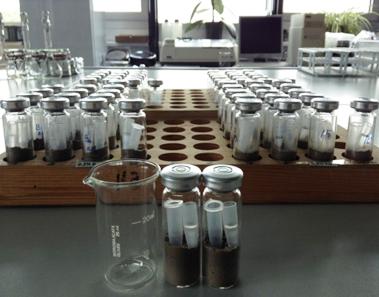Carbon sequestration in salt affected and alkaline soils under cotton in Tarim oasis (China)
DFG: Sino-German Center, 09.2013-10.2016
Xiaoning Zhao, Chengyi Zhao, Yakov Kuzyakov, Karl StahrThe alkaline soil is absorbing CO2; and the inorganic, non-biological process of CO2 absorption was observed throughout the day when the soil was sterilized under cotton in Tarim oasis, which is the largest endorheic basin in China with a typical temperate arid climate and is one of the most important areas for cotton production corresponding to 3.7% of the world cotton production. We assume that physicochemical processes (e.g. recrystallization as pedogenic carbonate, higher solution of CO2 in cool soil water) rather than biological processes (e.g. incorporation in soil microorganisms or plant roots) are responsible for this CO2 flux into soil. The isotopic laboratory 14CO2 experiment under defined environmental conditions (temperature, moisture, day/night) with and without plants aims to trace 14C in soil water, soil air, plants, pedogenic carbonates, microorganisms and the air above the soil and find the crystallization to CaCO3 from Ca2+ (in most conditions:CaCl2,CaSO4,CaCO3,Ca-Humus) with H2O in different saline and alkaline soils. The isotopic labeling 14CO2 experiment and the field experiment with 13CO2 will help to understand the mechanisms of CO2 fixation in saline and alkaline soil in Tarim oasis in China. Compared the isotopic results and the observation from the onsite soil CO2 concentrations measurement from experiment station at soil depths of 0 cm, 5, 15, 20, 30, 50, 80 and 100 cm, the mechanisms of CO2 flux into and out of the soil could be modeled, which can good elucidate the phenomenon of CO2 fixation in saline and alkaline soil in Tarim river basin in China.
Cooperation with the Chinese organization:
Professor Chengyi Zhao
Key Laboratory of Oasis Ecology and Desert Environment, Xinjian Institute of Ecology and Geography, Chinese Academic of Science, Urumqi 830011, China
Email: zcy@ms.xjb.ac.cn

CaCO3 Recrystallization Experiment

